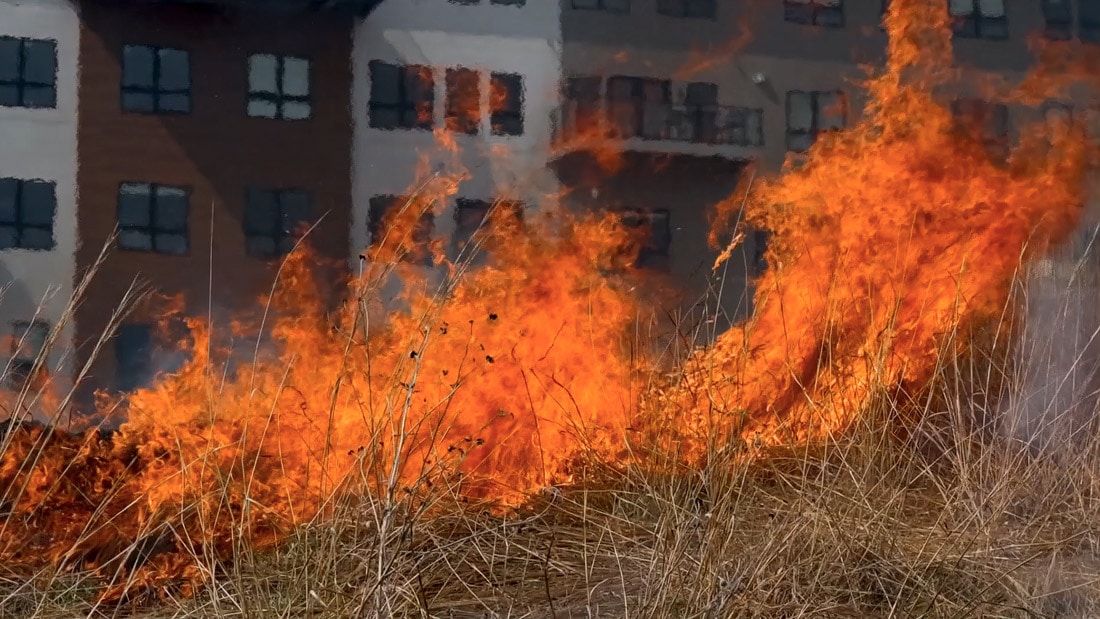Lithium-Ion batteries are amazing. They have a lot of power and no memory loss like the NiCad batteries of old.
With this power, however, comes risk. It doesn’t happen very often but the fact is, it does happen, Lithium-Ion batteries can catch fire and explode.
I watched a video of a camera battery similar to mine catch fire. It wasn’t being charged, it wasn’t being used, it was just sitting there. I don’t know about you but I keep batteries in my cameras, I put them in wall chargers overnight and when they’re charged I just throw them in my camera bag where they sit until I need them.
The battery fire really scared me and made me realize I’m sitting on probably a dozen potential fire hazards.
So I started researching solutions to make having lithium-ion batteries in the house, less dangerous.
I’m not saying this solution will totally prevent catastrophe, but it goes a long way in preventing them compared to just leaving them lying around in camera bags, etc.
In the video below I’ll show you the solution that I’m currently using to minimize the change of losing everything is one of these batteries decides to go off.
I’ll also have a couple of links below to the box and bag that I’m using to help minimize the risk.
Let me know what you think Was the video and solution helpful? Leave me a comment with any questions or thoughts on my solution.
Amazon link to the lipo bag I’m using: https://amzn.to/3cKbCAQ
Amazon link to Ammo can: https://amzn.to/2yHiKQ2
Amazon link to Lens Coat Battery Pouch I Use: https://amzn.to/2G034bI
So How Do I Safely Store Lithium-Ion Batteries?
So I did a lot of research, and I came up with a method that I feel protects myself, my family, and my property as much as I possibly can with these lithium-ion batteries.
Now, there’s nothing that is foolproof and certainly, something could still happen with the methods that I’m using, but I feel like I’ve really minimized the risk and feel a lot better sleeping at night.
Lithium-Ion Battery Safety Step One
The first thing I do after my battery is fully charged, is I put the protective plastic cap that comes with all my batteries on each battery. Now, this will keep the contacts of the battery from coming in contact with anything that could possibly short the battery out.
Lithium-Ion Battery Safety Step Two
The next step is I have this pouch from LensCoat that I use in the field to hold my batteries. Holds four at a time, and I have two or three of them that I use at any given time. But I’ll put that battery inside the protective pouch, and what that will do is further help keep those batteries separate and contained, so they don’t come in contact with each other.
Lithium-Ion Battery Safety Step Three
The next step in my line of defense for protecting myself, my family, and my property from lithium-ion batteries is I have a lithium-ion battery protective bag. Now, I’ve seen these used by themselves, but they’re not foolproof. I’ve seen batteries burn through these bags. So just on their own, these bags aren’t enough.
But I’ll put all my batteries in these protective lithium-ion pouches or bags. You can get them in pouches, bags. They come in all different sizes, but this is the size that works really well for my purposes.
Lithium-Ion Battery Safety Step Four
Now, the final step is I have a ammo can that I picked up on Amazon. It was less $10, I think, and I put the bag that contains the pouch that contains the cap that contains the battery in the ammo can.
One important thing that you want to make sure you do before you use this method is you want to take the rubber seal that is in the lid of the ammo can, you want to take that out because ammo cans are designed to keep gunpowder dry. So they basically create an air-proof, moisture-proof barrier with this gasket in place.
And if something were to happen where one of these batteries did short out, it would basically explode, because the gas coming from the battery shorting out and burning would create so much pressure that eventually the ammo can would explode. So you need to have this gasket out. It’s vital that this gasket is out so you don’t have an air-proof or airtight container.
So then once I’ve got everything in place, I seal up the can. Now, ideally, if you can place this someplace within a maybe three, four, five feet of any combustible materials, that’s either going to offer you more protection.
But I just store these down in my basement on a concrete floor, so that way there are no combustible materials that are close. And I found this is the best way that I can protect everything I care about from a lithium-ion battery short-circuiting and catching fire.
So this is the method that I use to protect from lithium-ion batteries shorting out or exploding. If you have a different or better method, leave a comment down below. I’d really like to hear about it.
In a future video, I’ll show you how I use this same system to charge my batteries, to also offer as much protection as possible while these batteries are not in use out in the field.
If you really like this video, please hit the subscribe button. I’d really appreciate it. And stay tuned for future videos.










Leave A Comment
You must be logged in to post a comment.